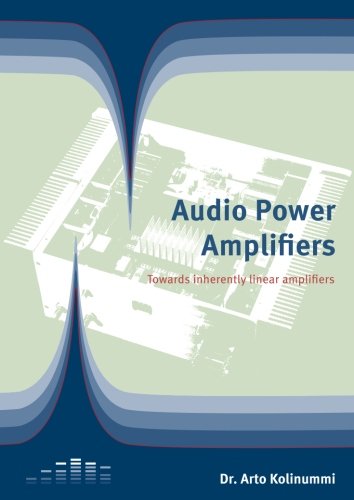All Categories



Audio Power Amplifiers: Towards Inherently Linear Amplifiers
Share Tweet
Get it between 2024-05-15 to 2024-05-22. Additional 3 business days for provincial shipping.
*Price and Stocks may change without prior notice
*Packaging of actual item may differ from photo shown
- Electrical items MAY be 110 volts.
- 7 Day Return Policy
- All products are genuine and original
- Cash On Delivery/Cash Upon Pickup Available








About Audio Power Amplifiers: Towards Inherently Linear
Most audio amplifiers are designed and measured using well established practices that have hardly changed during last thirty or more years. Despite their widespread use, these practices are not necessarily the best available. Harmonic distortion levels are in many cases below a realistically audible limit. Still, many people claim to hear differences between amplifiers with similar THD performance. Therefore, it is clear that harmonic distortion is not the metric that should be optimized for best subjective quality. That indicates that there are other errors to be considered in amplifier design, which do not receive enough attention.In this study, Dr. Kolinummi analyses many sources of distortion and measurement methods. His focus is specifically on dynamic and transient errors, which are not normally considered in measurements, and what Kolinummi calls ‘memory errors’1. Optimization of internal linearity is thought to be the best way to optimize dynamic and transient performance and to maintain good linearity and predictable characteristics over a wide frequency and dynamic signal range. Various existing circuit topologies are analyzed and compared using both simulation and prototyping in open loop configuration. Error correction methods including negative feedback are studied to better understand their advantages and drawbacks. Several new circuit variations are proposed, specifically optimized for very high performance in open loop. In addition to almost two hundred prototype units, three complete audio power amplifiers were built and analysed during the course of this research and were used in different actual audio systems to verify the findings.This study demonstrates that there are error sources having a greater impact on amplifier performance than harmonic and intermodulation distortion, and those errors do not become visible in common measurements. Most amplifiers on the market are poorly optimized to minimize dynamic errors. It was found that the common amplifier topologies produce a large amount of both static and dynamic distortion in open loop, leading to strongly rising distortions with frequency even when the feedback loop is closed. The proposed circuit structures reduce static and dynamic open loop distortion to negligible levels and improve overall performance. Although these circuit structures can be used within a global negative feedback loop, they are eminently suited for very high performance open loop topology power amplifiers.This book does not give you a cookbook design that you can copy into your own unit, but rather aims to help you develop an insight in sources of non-linearities in amplifier circuits; methods and ways to correct or cancel these non-linearities; and methods and ways to interconnect amplifier stages into a very high performance linear system. Those who are knowledgeable in high performance analog design will have no problem to apply these methods and ways into their own designs. I am indebted to Dr. Kolinummi for allowing the use of his study material for this book. I am also thankful for critical and constructive comments during the development of this book from Edmond Verreijn-Stuart, Dejan Veselinovic and Stuart Yaniger.Jan Didden, Publisher/Editor, Linear Audio

















